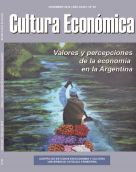Images we live by in organizations
Keywords:
Metaphors, Organizational Studies, Cognitive Linguistics, Business EthicsAbstract
This paper is grounded on the idea that every organization is a microcosm whose members share a mindset due to their common experiential basis. Thus, those shared images and metaphors will be studied in order to consider the possibility of finding a vehicle for an understanding of the organizational microcosm. This possibility will be illustrated with a study carried through group drawings made by several company employees in Argentina. Specifically, we will analyze some elicited “ideas of order”, of which we will explore its semantic connotations and its moral implications.Downloads
References
Cirlot, J. E. (1992). Diccionario de Símbolos. Ediciones Labor, Barcelona.
Cornelissen, J.P. (2006). “Metaphor and the Dynamics of Knowledge in Organization Theory: A Case Study of the Organizational Identity Metaphor”. En Journal of Management Studies N° 43:4, pp.683-709.
Di Stefano, M. (2006). “La perspectiva retórica”. En di Stefano, M. (coord.) Metáforas en uso. 2°ed. Biblos, Buenos Aires.
Díaz, H. (2006). “La perspectiva cognitivista”. En di Stefano, M. (coord.) Metáforas en uso. 2°ed. Biblos, Buenos Aires.
Goatly, A. y LLE Project (2002-2005). Metalude, Department of English, Lingnan University. http://www.ln.edu.hk/lle/cwd/project01/web/
home.html Último acceso: diciembre 2016.
Hampe, B. (ed.) (2005). From Perception to Meaning:Image Schemas in Cognitive Linguistics. Walter de Gruyter, Berlín.
Harris, M. (1976) “History and significance of EMIC/ ETIC distinction”. En Annual Review Anthropology, vol. 5, pp. 629-50.
Kövecses, Z. (2008a). “Metaphor and Emotion”. En Gibbs, R. W. ed. The Cambridge Handbook of Metaphor and Thought. Cambridge University
Press, New York.
Kövecses, Z. (2008b). “Universality and Variation in the Use of Metaphor”, En Johannesson, N. & Minugh, D. (eds.). Selected Papers from the 2006 and 2007 Stockholm Metaphor Festivals. Stockholm, Department of English, Stockholm University. pp. 51–74.
Lakoff, G. (1993). “The Contemporary Theory of Metaphor”, en Ortony, A. (ed.) Metaphor and Thought. Cambridge University Press, Cambridge, pp: 202-251.
Lakoff, G. y Johnson, M. (2009). Metáforas de la vida cotidiana. Ediciones Cátedra, Madrid.
Lewis, C. S. (1939). “Bluspels and Flalansferes: A Semantic Nightmare”, in Rehabilitations and Other Essays. Oxford University Press, London.
Revista Cultura Económica 31 01 Preziosa_Maquetación 1 16/12/2017 10:21 a.m. Página 31.
Luciani, R. (2008). “Analogia trascendentalis. Los Trascendentales a la luz de Tomás de Aquino y Hans Urs von Balthasar”, En Apuntes Filosóficos, 33 (2008), pp. 33-64.
McClelland, D. C. y Burnham, D. H. (2003). “Power is the great motivator”. En Harvard Business Review. Vol. 81, n°1, pp. 117-126.
Morgan, G. (1999). Imagin-I-ización: una nueva aptitud crucial para la conducción y el management en un mundo en movimiento y cambio. Granica, Barcelona.
Nubiola, J. (2000). “El valor cognitivo de las metáforas”. En Cuadernos de Anuario Filosófico, N° 103, 73-84.
Preziosa, M. M. (2009). “Imago vocis: el diálogo de Narciso”. En Fernando Ortega et al. Cultura del Diálogo e inclusión social. EDUCA, Buenos Aires.
Preziosa, M.M. (2016). La mentalidad compartida en la empresa. Editorial Teseo, Buenos Aires.
Schein, E. (1999). The Corporate Culture Survival Guide- Sense and Nonsense About Culture Change. Jossey-Bass Publishers, San Francisco.
Sharifian, Farzad (2017). Cultural Linguistics: A new multidisciplinary field of research. http://artsonline.monash.edu.au/lsc/5042/?_ga=1.
756957090.1491672912. Último acceso: diciembre 2016.
Van Maanen, J. (2011). “Ethnography as Work: Some Rules of Engagement”, en Journal of Management Studies, 48(1), pp. 218-234.
Verhezen, P. (2010). “Giving Voice in a Culture of Silence. From a Culture of Compliance to a Culture of Integrity”, en Journal of Business
Ethics N° 96, pp. 187-206.
Downloads
Published
How to Cite
Issue
Section
License













